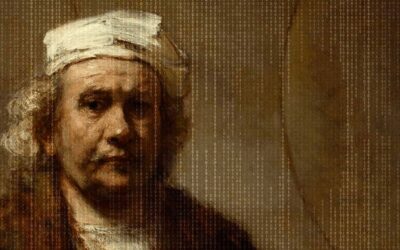Determine How to Most Effectively Get New Data into the Museum CMS

Rachael Cristine Woody
This post is targeted to those who have recently acquired a CMS and need to understand how to most efficiently get new data into the CMS. To be clear, this post is not about previously existing database content, as that will likely have been migrated as part of your implementation of the new CMS. Today’s focus will be on new data creation and capture. This post builds on our previous work of getting to know your new CMS.
Common Methods for Getting Data into the New CMS
The tools available for getting data into the new CMS can be as technically complex as an import tool, or as basic as creating one record at a time. The key is to understand what options are available with your new CMS and how to select the right tool for the job. For example, there may be a project where bulk creation of records is the best way to go, or where working with the vendor for a one-time special import may make the most sense.
We’ll explore each of these methods in this post:
- Import tool
- Work with the vendor
- Bulk creation
- 1 at a time
Import Tool
Depending on your CMS there may be import tools readily available for your use. This is especially true if you are working with proprietary software. For CMS options on the more modest side (which can correlate with the size of the annual fee), there may be a requirement to work with the vendor or, if it’s open-source software, work with someone knowledgeable about the more technical aspects (such as command line coding).
Work With the Vendor
If there is a vendor that actively supports your CMS—meaning either proprietary software or the when the museum has contracted with a hosting company—there is the option to work with the CMS vendor to import new data. This option typically makes the most sense if you are either: 1. Importing a large amount of data and don’t have an import tool available to you; or 2. The data is highly complex and requires additional direction beyond the importer tool abilities to which you have access.
Bulk Creation
This option makes the most sense if you intend to create several records that contain shared or similar data. For example, you are cataloging 20 different ceramic objects that share similar data points. This tool may also be handy if you do not have access to the import tool covered above. Bulk creation is a great option for shared data across records that requires only minimal data editing on your part.
One At a Time
If this is your only option, it is important to know ahead of time so you can employ other methods to help support your work. Creating one record at a time can be tedious if you have to do it for quite a few records. If this is the case for your museum’s setup, there are strategies you can consider to make it as efficient and as painless as possible. The following posts may be of assistance:
- Ask Me Anything (AMA): How to Prepare for a New CMS — Where do you begin?
- Ask Me Anything (AMA): How to Migrate Data into a New Museum CMS
- Craft Museum Workflows That Include the CMS
- Document Museum CMS Fields and Function
- The Importance of Sustainable Museum Cataloging & How to Achieve It
- Museum CMS 101: Workflow and Record Construction
These posts focus on data cleanup; however, you may find that the strategies and potential workflows presented can help inform your approach:
- Ask Me Anything (AMA): How to Conduct Efficient Data Cleanup
- Create a Plan for Museum Data Cleanup
- Strategies for Effective Museum Data Cleanup – Part 1
Conclusion
Understanding your options for how to get new data into your CMS is an important foundational element to your success. Now that we’ve covered how to get new data into the CMS, we’ll return next week to focus on data capture and how your learnings this week can inform your data capture approach.

Rachael Cristine Woody
Never miss another post. Subscribe today!
Similar Posts
No-Code Digital Storytelling Example: Rembrandt’s Self-Portrait at Kenwood House
Explore how English Heritage’s Kenwood House uses the no-code platform Shorthand to bring Rembrandt’s Self-Portrait with Two Circles to life through visual storytelling and interactive design.
Exploring No-Code Digital Storytelling: Hoover’s “Fanning the Flames” Exhibit
Explore no-code digital storytelling with Hoover’s ‘Fanning the Flames’ exhibit. See how interactive tools (Deep Zoom Color Compare & Hot Spot) enhance user engagement and the visual experience.
An Introduction to Scrollytelling for Museums
Discover how museums use scrollytelling and digital storytelling platforms to create immersive narratives. This introduction explores key concepts and approaches to interactive storytelling.
Exploring Self-Determinate Multiple Pathways: An Example of Digital Storytelling
Discover how self-determinate multiple pathways offer flexible interactive storytelling in museum exhibits. Learn from the Tenement Museum’s ‘Your Story Our Story.’






Leave a Comment
Comments are reviewed and must adhere to our comments policy.
0 Comments